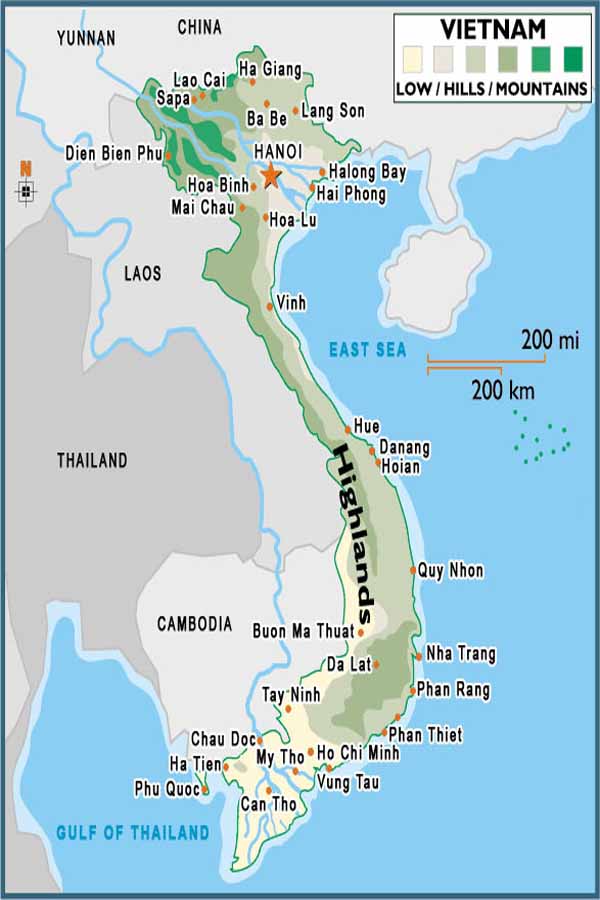 |
Vietnam Trip
March 2010
HANOI
A city of 6,500,000….. the country’s captivating capital. This city was our stop (after a night in Bangkok) and a 24 hour flight expedition to this area of IndoChina.
Hanoi is a city of millions of buzzing motorbikes, cyclo-rickshaws and few cars. We rode a rickshaw through the narrow streets of the French-flavored Old Quarter amidst all the buzzing cycles, trusting our driver to keep us safe. Our hotel was centrally located in the city, so we could walk around, enjoy the lake, the people, and the culture. It is a magical city, influenced strongly by the French and the utilitarian atmosphere of Communism; it is not nearly as modern as Saigon. The major drawback for a pedestrian is that is very dangerous to cross the streets due to the heavy motorcycle traffic. And, this really blew our minds: Traffic signals are only a suggestion, not enforced! Shopping was fun and very inexpensive. We enjoyed visiting the Temple of Literature, the Museum of Ethnology, Uncle Ho’s homestead, workplace and mausoleum.
Hanoi boasts more than 1,000 years of history, and the past few hundred years has been well preserved. It hosts more cultural sites than any city in Vietnam, including over 600 pagodas and temples. The Old Quarter, near the lake, has the original street layout and architecture of old Hanoi. The area is famous for its small artisans and merchants, including many silk shops.
The city survived American bombs and Russian influence to emerge relatively unscathed in the early 1990s as an example of a French-conceived colonial city. Huge mansions line grand boulevards and lakes and parks dot the city. Under French rule, the French colonial architecture style became dominant and much still remains today.
Hanoi's population is growing (about 3.5% per year); the city is both a major metropolitan area of Northern Vietnam and also the country's political centre. This population growth puts pressure on the infrastructure, which dates back a century or so.
During the Vietnam War, Hanoi's transportation facilities were disrupted by the bombing of bridges and railways, which were, however, repaired. At the end of the war, Hanoi became the capital of Vietnam when North and South Vietnam were reunited in July 1976.
Hanoi will soon have another international airport, which will cost $8 billion, being the highest foreign investment so far in the history of Vietnam. It will become the largest and most modern airport in Asia. The construction will be carried out in three stage, the first phase will start in 2011until 2015.
HALONG BAY
To escape the constant buzz of millions of motorbikes, we headed to see the limestone peaks and beauty of Halong Bay. Here we boarded a traditional wooden junk (don’t misinterpret the word for this was quite beautiful). All 14 of us fit: sleeping quarters, lovely dining room, and a gorgeous bay. We spent one night here and cruised on the bay, spending some time exploring a nearby interesting cave.
The bay consists of a dense cluster of over 3,000 islands, each topped with thick jungle vegetation, rising spectacularly from the ocean. This densely concentrated zone of stone islands, world famous for its spectacular scenery of grottoes and caves, forms the central zone of Ha Long Bay. Several of the islands are hollow, with enormous caverns.
There are a number of beautiful beaches on the smaller islands. Some of the islands support floating villages of fishermen, who fish the shallow waters for 200 species of fish and 450 different kinds of mollusks. A community of around 1,600 people live on Ha Long Bay in four fishing villages.
Ha Long Bay was first listed as a UNESCO World Heritage Site in 1994, in recognition of its outstanding, universal aesthetic value. In 2000, the same committee additionally recognized Ha Long Bay for its outstanding geological and geomorphological value, updating its listing. In 2009, the New 7 Wonders of the World Foundation included Halong Bay on its list of nominations as one the World's 7 Natural Wonders.
|
HANOI
Click on the photo to view larger
|

